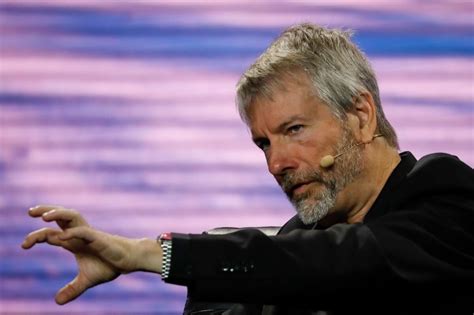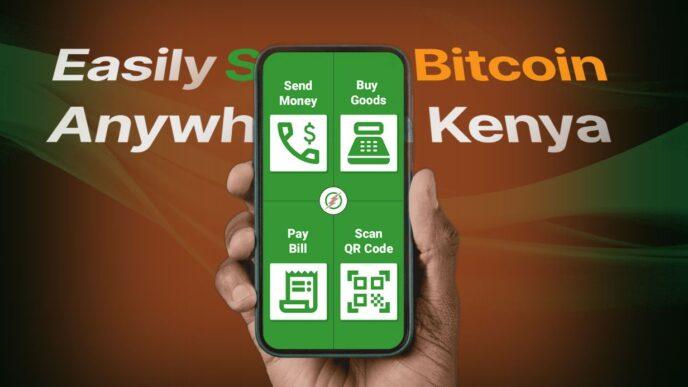In a recent fireside chat, Michael Saylor, Executive Chairman and Founder of MicroStrategy, and David Marcus, CEO and Co-founder of Lightspark, shed light on the revolutionary potential of Bitcoin’s Lightning Network.
As the world increasingly seeks efficient, borderless financial solutions, the insights shared by these industry leaders paint a compelling picture of a future where Bitcoin and its Layer 2 solution, the Lightning Network, play a pivotal role in reshaping how money moves across the globe.
David Marcus, a veteran in the fintech industry with an impressive track record that includes leadership roles at PayPal, Facebook (now Meta), and his current venture Lightspark, shared his journey from removing friction in traditional payments to embracing the transformative power of Bitcoin. His experience spans from founding mobile payments company Zong, which was later acquired by PayPal, to leading Facebook’s Messenger platform to over 1.5 billion monthly users, and spearheading the ill-fated but ambitious Libra (later Diem) project.
Marcus’s pivotal moment came in 2013 when, as the leader of PayPal, he witnessed firsthand the power of Bitcoin in Argentina. When government restrictions forced PayPal to limit money movement out of the country, Bitcoin’s price surged as Argentinians flocked to the cryptocurrency to preserve their wealth and financial freedom. This event crystallized Marcus’s belief in the importance of a decentralized, borderless monetary system that could resist government control and provide financial sovereignty to individuals.
The evolution of Marcus’s career reflects the broader trajectory of the payments industry. From early efforts to reduce friction in traditional payment systems to the realization that the underlying financial infrastructure, largely unchanged since the creation of SWIFT in 1974, was woefully inadequate for the digital age. This understanding led to the Libra project, which, despite its ultimate failure, served as a crucial stepping stone towards recognizing Bitcoin’s unique position as a neutral, decentralized settlement layer for global finance.
Lightspark, Marcus’s current venture, emerges as a critical player in realizing the vision of Bitcoin as the foundation for a new global financial system. The company is building core infrastructure on the Lightning Network, addressing the key challenges that have hindered Bitcoin’s adoption as a medium of exchange: speed and cost. While Bitcoin’s base layer provides unparalleled security and decentralization, it struggles with scalability, leading to slow transaction times and high fees during periods of network congestion.
This is where the Lightning Network comes into play. As a Layer 2 solution built on top of Bitcoin, Lightning enables near-instantaneous, low-cost transactions by creating payment channels between parties. These channels allow for multiple transactions to occur off-chain, with only the final settlement recorded on the Bitcoin blockchain. This approach dramatically increases the network’s transaction capacity while maintaining the security and decentralization of the underlying Bitcoin network.
Lightspark’s contribution to this ecosystem is significant. The company has developed an enterprise-grade platform that allows businesses to connect to the Lightning Network without grappling with the complexities of running a node, managing liquidity, or handling the intricacies of payment routing. This solution democratizes access to Lightning technology, making it accessible to a wide range of businesses from large exchanges to small fintech startups.
A major milestone for Lightspark and the Lightning Network came with the announcement that Coinbase, one of the world’s largest cryptocurrency exchanges, has launched Lightning support using Lightspark’s stack. This integration brings the power of instant, low-cost Bitcoin transactions to Coinbase’s vast user base across 100 countries, representing a significant leap forward in the adoption of Lightning technology.
Beyond facilitating Bitcoin transactions, Lightspark is pushing the boundaries of what’s possible with Lightning through innovations like the Universal Money Address (UMA) standard. UMA allows users to send and receive money using email-like addresses, abstracting away the complexities of cryptocurrency transactions. This approach enables seamless cross-border payments using Bitcoin and Lightning as the settlement layer, without requiring users to understand the underlying technology.
The UMA standard represents a paradigm shift in how we think about international money transfers. It allows users to send their local currency and have the recipient receive it in their preferred currency, all settled in real-time using Bitcoin and Lightning. This solution addresses one of the most persistent challenges in global finance: the ability to move money quickly and cheaply across borders, regardless of the currencies involved.
Lightspark’s approach to compliance is another critical aspect of its offering. By building compliance tools directly into its stack, the company enables regulated institutions to leverage the Lightning Network while meeting their regulatory obligations. This includes support for travel rule requirements and the ability to verify counterparties in transactions, making Lightning a viable option for banks, exchanges, and other financial institutions operating in regulated environments.
The potential impact of these developments extends far beyond the cryptocurrency ecosystem. By providing a fast, cheap, and compliant way to move value globally, Lightning and solutions like Lightspark’s have the potential to revolutionize remittances, e-commerce, and international trade finance. In regions where the average Bitcoin purchase might be as low as $20-$30, Lightning becomes not just a convenience but a necessity, enabling financial inclusion and access to the global economy for millions of people.
As the Lightning Network matures and adoption grows, we can expect to see a proliferation of innovative financial services built on this infrastructure. From micropayments that enable new business models in content creation and digital services to complex financial instruments that leverage the programmability of Bitcoin, the possibilities are vast and largely unexplored.
However, challenges remain. The Lightning Network is still a relatively young technology, and issues around liquidity management, channel capacity, and user experience need to be addressed for mass adoption. Companies like Lightspark are at the forefront of solving these challenges, but it will take time and continued innovation to realize the full potential of this technology.
The vision articulated by David Marcus and exemplified by Lightspark’s work is one of a future where money moves as freely and instantaneously as information does today. It’s a future where financial services are truly global, accessible, and resistant to censorship or control by any single entity. As Bitcoin continues to gain acceptance as a store of value, the Lightning Network emerges as the key to unlocking its potential as a medium of exchange, bridging the gap between the world of cryptocurrency and traditional finance.
The insights shared by David Marcus paint a picture of a financial future that is more open, efficient, and inclusive. As companies like Lightspark continue to build the infrastructure for this new financial paradigm, we stand on the cusp of a transformation in how value is transferred globally. The journey from traditional payment systems to Bitcoin and Lightning represents not just a technological evolution, but a fundamental reimagining of the nature of money and financial sovereignty in the digital age. As this technology matures and adoption grows, we may well look back on this period as the beginning of a new era in global finance, one where the promise of truly borderless, instant, and low-cost transactions finally becomes a reality.















